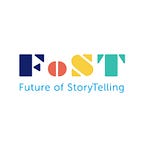Prying Open a Troubled Mind
Former FoST Prize finalist returns with part two of its award-winning novella-game hybrid
So a book, a film, and a game are built into an app…
The punch line: an innovative multimedia tool to convey and evoke deeply emotional queries. Available on both the iPhone and iPad, Pry pushes the conventions of digital storytelling to explore the emotional and psychological impacts of Post-Traumatic Stress Disorder (PTSD). Pry is an interactive novel that draws on the utility of stunning graphics and the tactility of touchscreen capabilities to fully engage the role-player. The story follows James, a demolition expert and veteran of the Gulf War. Within the story, the role-player sees through James’s eyes. His failing vision calls for your finger to pry open his eyes and delve into his perspective. The text is merely one layer of information; players can also tear into the text to read between the lines.
Pry was released in 2014, and Pry Part II was recently released on June 9th. The second iteration of the novella includes its final chapters and conclusion. It was Pry’s interactive narrative approach that secured its place as a finalist for the 2014 FoST Prize. Pry’s ability to immerse the role-player in a nonlinear narrative, with a complex protagonist, transplants subjectivities in a way that demonstrates James’s unique perspective and consciousness.
Pry is part of a growing movement of video games that address tough-to-understand topics by allowing players to explore the emotional realities of living through trauma. Not only does Pry’s imaginative design provide a platform and a language to depict a character who struggles with PTSD, the interactive components allow the role-player to live these realities as well. The social implications for games like Pryexpress new and exciting ways for people to understand each other and build empathy toward unique circumstances and conflicts. The power of sharing these stories is hidden between the lines of the novella: It’s the transformative experience itself.
